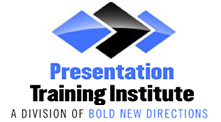Giving a presentation is no easy feat. It takes a tremendous amount of thought, preparation, and of course, organization. If you want to stand up and confidently deliver a dynamic presentation, it is critical that you are well organized before the big day. It is not enough to just get up and speak off the cuff. Rather, good presenters bring well-organized content, a confident attitude, and a well-prepared presentation. Before your next presentation, take note of these important organizational musts.
Know Your Audience
Before you begin preparing the content for your presentation you must first ask yourself, “Who is the audience?†and “What do I want them to learn?â€Â Gather some important information about your audience including any background information and what knowledge they are already bringing to the presentation. Then, figure out your purpose. Are you there to inspire, give advice, or give information?
Know Your Venue
Another important factor in preparing a presentation is the type of venue you will be using. Are you presenting in an auditorium in front of a hundred people or are you presenting in a small conference room in front of twenty people? Will you be on a stage? Do you have access to a large screen or television? What kind of sound equipment will you have? All of these things are important to know prior to organizing your presentation. You will probably take a different approach if speaking in a large room than you would if you were in a conference room.
Know Your Content
No matter how great your delivery is or how beautiful your visuals are, your presentation will not be a success if it isn’t based on solid content. This does not mean that you have to bore your audience with content overload, it simply means that if you are going to talk about something you better be knowledgeable about it.
Create an Outline
Many first-time presenters make the mistake of scripting their entire presentation. While this is certainly not necessary (and not even recommended), it is recommended to devise an outline of your presentation. Make sure you start by outlining your introduction. This is perhaps the most important part of the entire presentation, as it is your chance to grab the audience attention. Make note of any quotes you might use, visuals you plan to use, or interesting story you plan to tell. Then, outline the content by using bullet points that list your main points. Do NOT script the entire presentation, but rather jot down important points to help you stay on track and move in order.
Prepare Your Materials
Gather any materials you are going to need for your presentation including visuals, pictures, music, notes, and your computer. Make sure you have everything ready to go the day before the presentation. This is also a good time to do a “sound check†and run through your technology at the actual venue to make sure everything is working properly. On the day of your presentation, arrive early so you can set everything up and make sure it is all working and ready to go.
